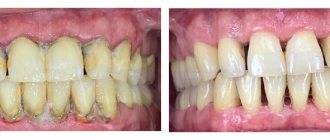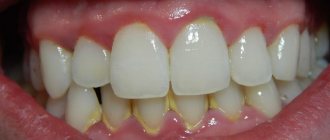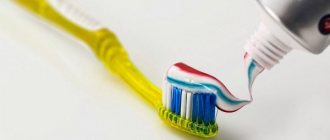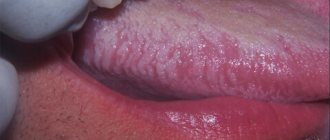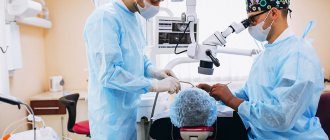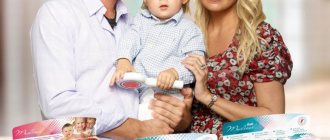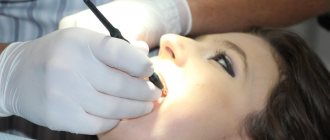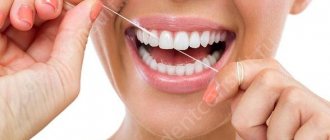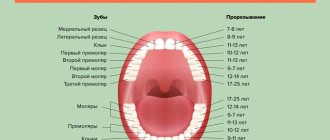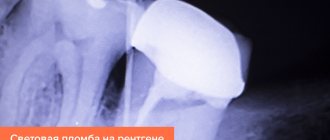Physiotherapy is a method of therapeutic influence on the body of natural, physical factors. These include electric current, light, heat, ultrasonic and magnetic radiation. Physiotherapy is effective during the rehabilitation period after operations, injuries, and for the treatment of acute infectious diseases. In this case, the body experiences less stress than when taking drugs orally, intramuscularly or intravenously.
In addition to the basic treatment plan, dentistry uses electrophoresis, ultrasound and laser therapy.
Goals and objectives of physiotherapeutic treatment in dentistry
Physiotherapeutic techniques are used in dentistry independently or as part of complex treatment.
First of all, they are aimed at stimulating blood supply processes and metabolic functions of the body at the level of cell tissue. This approach provides optimal conditions for the restoration of organs and systems affected by the disease. Physiotherapy gives good results after tooth extraction and dental surgery, for pathological conditions of the oral cavity and for eliminating pain symptoms of various natures. It is prescribed even for such serious diseases as functional pathology of the temporomandibular joint.
The correct selection of physiotherapeutic techniques plays an important role and makes it possible to restore the functioning of not only the organs of the maxillofacial area, but also the entire body.
Therapeutic effect
The use of physiotherapy methods allows you to achieve the following effects:
- reduction of treatment time;
- acceleration of the recovery period;
- therapy has a healing, disinfecting, antibacterial effect;
- reduction of pain syndrome;
- healing, activation of tissue regeneration;
- achieving positive dynamics in stagnant, chronic processes.
The first results are visible after the first or second procedure. But treatment cannot be interrupted; the course should be completed unless there is an indication for interruption. Therefore, the doctor must monitor the therapy and the patient’s condition.
Areas of dentistry where physiotherapy is used
An integrated approach and adherence to physiotherapeutic protocols - these are the principles that guide the specialists of the dental department of the Doctor Nearby clinics. They use physical therapy to address the following:
- minimizing or eliminating pain symptoms;
- stimulation of regeneration after implantation and sinus lift surgery;
- eliminating emergency conditions for facial pain of unknown nature;
- treatment of teeth and gums;
- treatment of TMJ diseases;
- restoration of the mucosa after surgery;
- stimulation of muscle tone and nerve conduction.
Methods of influence
Galvanization and electrophoresis are considered one of the most effective procedures in the treatment of oral diseases.
This is interesting: Tartar - treatment with various methods
Electrical anesthesia and EDI (electroodotodiagnosis) are also used. They allow you to achieve positive results in a short time.
Galvanization and electrophoresis
Methods of physiotherapy when diagnosing diseases of the oral cavity are used to restore blood circulation in the problem area.
Also, galvanization and electrophoresis help improve lymphatic flow and activate the regeneration process.
Both methods involve a direct effect on the oral mucosa or the upper layer of the epidermis, help relieve inflammation and are used in the presence of scars.
Galvanization is carried out using a device with an impact force of 40 V. Before use, disposable sterile pads are placed on the electrodes. The duration of the session is 15 minutes.
Electrophoresis involves exposure to current using drugs. They are introduced into the area where the pathological process is localized and do not have a negative effect on the body.
Indications for galvanization or electrophoresis are:
- Periodontal diseases.
- Chronic dental diseases.
- The presence of scars on the oral mucosa or the skin of the jaw.
- An inflammatory process affecting the salivary glands.
- Periodontal inflammation.
- Post-traumatic state.
- The rehabilitation period after surgery on the jaw area.
- An inflammatory process affecting the joints of the jaw.
- Neuritis or neuralgia of the facial nerve.
Procedures are not prescribed in cases where the patient is diagnosed with epilepsy, tuberculosis of various forms and circulatory disorders. Contraindications also include pathologies of the heart muscle, oncology, and increased body temperature.
Electrical anesthesia
Refers to alternative methods of pain relief. The essence of the method is that anesthesia is administered using current. The effect occurs after the interaction of the electrode, which is attached to the drill, and the clip attached to the earlobe.
Indications for the procedure are:
- Preparation for significant carious lesions.
- Opening the cavity.
- Pulp removal.
- Removal of baby teeth.
The procedure is completely safe and allows you to achieve deep pain relief. In contrast, anesthesia administered in the usual way is only half effective and does not reach the deep layers of tissue.
As a result, a person feels discomfort and minor pain when removing the pulp or carious lesion.
Physiotherapy is indicated after surgery, injuries in the jaw area, or in the presence of painful sensations of various origins.
Electroodontodiagnosis
Physiotherapy is used both to treat certain oral diseases and to determine the extent of pulp damage.
For this purpose, electroodontodiagnosis is used, which is carried out using current pulses. In the absence of pain, the impulses are increased until the problematic element begins to react.
The physiotherapeutic method is used to establish the level of sensitivity of the pulp located in the tooth cavity.
The appearance of a reaction indicates the presence of carious lesions in the deep layers of hard tissue.
Electroodontodiagnostics is carried out to identify:
- Pulpitis.
- Injuries to dental tissues.
- Oncology.
- Wedge-shaped defect.
- Hyperesthesia of dental tissues.
The method of physiotherapy is used in cases of neuritis, osteomyelitis, and sinusitis. Indications for the appointment of electroodontic diagnostics also include caries and periodontitis.
The procedure is not performed on pediatric patients or those with pathologies of the nervous system. It is intended to determine the condition of the pulp.
Types of physiotherapy in dentistry
| Name | What is? |
| Laser therapy | Provides exposure to red and infrared rays on the gingival area, oral mucosa and facial skin. Allows you to eliminate swelling, reduce inflammation, slow down the growth of pathogenic bacteria, eliminate pain symptoms, etc. |
| Electrophoresis and galvanization | Involves the use of continuous direct current of low strength and low voltage for the purpose of administering pharmacological drugs through the skin and mucous membranes. Allows you to stimulate blood flow, start bone tissue restoration processes, and improve the flow of oxygen to the tissues around the affected tooth. |
| Magnetotherapy | It is based on the use of a low-frequency magnetic field for the treatment of inflammatory processes, edema, elimination of hematomas and the consequences of traumatic injuries to the maxillofacial area. After injuries, it can be used already on the second day and provides a good effect. Wounds and postoperative sutures are not a contraindication for use. |
| Ultrasound therapy | Based on the therapeutic effects of mechanical vibrations of ultra-high frequencies. Allows you to normalize metabolic functions and stimulate the supply of oxygen. The antispasmodic effect provided by ultrasound makes it possible to reduce pain symptoms. |
Methodology
Thanks to compact and universal equipment, physiotherapy can be carried out in a dental clinic, provided it is equipped. It is also possible to carry out the procedure in a clinic or hospital upon referral from a doctor free of charge.
| Main action | Indications | How to do it | |
| Laser therapy | anti-inflammatory healing painkiller disinfectant bone-forming | caries, pulpitis, periodontitis gingivitis, periodontitis, stomatitis injuries, viral and bacterial diseases of the mucous membrane dental surgery | A helium-neon or conductive laser is used. The radiation is directed to tissue and penetrates to different depths. |
| Depophoresis | cleans and sterilizes root canals due to the copper depot, it creates a tightness of the main and periapical branches stimulates bone tissue regeneration | treatment of difficult canals tool breakage unsuccessful dental treatment wide apical foramen | Three visits are required. A suspension of copper and calcium hydroxide is injected into the prepared canal. Using the cathode and anode, the current is increased until heat and tingling appear. |
| Galvanization and Electrophoresis | absorbable action improvement of metabolic and reparative processes long-term effect of the drug passage of medicine through the narrow canals of the tooth | periodontitis trauma, broken bones periodontitis tooth sensitivity non-carious lesions implant installation | The effect of direct current and drugs occurs using the cathode and anode. |
| Amplipulse therapy (SMT therapy) | anesthesia improvement of metabolism activation of the neuromuscular system | stomalgia, neuritis, glossalgia, neuralgia salivary stone disease muscle stimulation | The electrodes are fixed. They supply alternating current, constantly changing in amplitude and frequency. A slight vibration is felt due to the contraction of muscle fibrils. |
| Fluctuarization | anti-inflammatory painkiller regenerating | periodontitis acute inflammation of the mucous membrane | Electrodes are installed on the skin, and a cathode is installed in the oral cavity. Low current and low voltage are supplied. |
| Darsonvalization | analgesia regulation of metabolic processes activation of regenerative processes | periodontitis gingivitis aphthous stomatitis abscess, phlegmon | Vacuum electrodes are used; they create a pulsed current of high frequency and high voltage, but of low strength. |
| Ultratone therapy | vasodilation improved blood circulation reduction of toothache desensitization resorption of adhesions and infiltrates | periodontitis periostitis wounds and ulcers in the mouth periodontitis neuritis arthritis | Electrodes filled with neon are applied. High frequency current with a power of up to 10 W is supplied. |
| Ozone therapy | strengthening local immunity stimulation of regeneration anesthesia antimicrobial effect | wounds, ulcers, abscess, phlegmon, candidiasis, herpes periodontitis periodontitis caries pulpitis sinusitis | An ozone-oxygen gas mixture is supplied to the mucous membrane or gum through a tube under pressure. It is possible to use ozone solutions in the form of irrigations, applications, rinses and injections. |
| Microwave therapy | vasodilator painkiller anti-inflammatory trophic | periodontitis gingivitis, stomatitis, alveolitis (chronic form) periodontitis | It is carried out with an emitter of various widths. Apply to the skin in the area of projection of the lesion and apply electromagnetic vibrations. |
| UHF therapy | antispasmodic regenerating increased salivation anti-inflammatory | injury to bones and soft tissues periostitis, osteomyelitis, abscess, phlegmon neuritis | Capacitor plates are applied and an ultra-high frequency electromagnetic field is formed. |
| Aeroinotherapy | acceleration of recovery processes activates adaptation mechanisms | stomatitis periodontitis wounds, ulcers on mucous membranes | The patient sits and inhales ionized air. |
| Massage (hydro, vacuum, manual) | improved blood circulation, stimulation of regeneration | neuritis contractures periodontitis periodontal disease | Using a special nozzle, water is supplied under pressure or, conversely, a vacuum is created. Finger massage with honey will be useful for every patient at home. |
| Ultrasound therapy | antispasmodic reparative painkiller anti-inflammatory absorbable activation of metabolic processes | periodontitis periodontal disease pulpitis, periodontitis diseases of the mucous membranes neuritis periostitis, osteomyelitis | The mucous membrane is coated with oil, then the emitter is passed, without coming off, along the transitional fold. The impact factor is ultra-high frequency mechanical vibrations. |
| Magnetotherapy | decongestant anti-inflammatory reparative | periodontitis trauma to the oral mucosa postoperative wounds bone fractures implant installation | It is carried out by an inductor that acts on a continuous magnetic field. |
| Diathermocoagulation | prevents bleeding reduces postoperative pain prevents the absorption of microbes and toxins through the vascular wall | pulpitis periodontitis periodontitis hemangiomas benign neoplasms | Electrodes in the form of a root needle, knife or ball are used. A current of high frequency, high strength and density is supplied. |
Physiotherapy of teeth and gums should be carried out systematically, at least 5-15 procedures per course of treatment, since the accumulation of the dose and its potentiation in the future works.
Features of the use of laser therapy in dentistry
Therapy with red and infrared rays began to be used in dentistry in the middle of the last century. Modern laser devices have attachments that allow them to be used both cutaneously and directly in the oral cavity.
| Indications and contraindications for the use of laser therapy | |
| Indications: | Contraindications: |
| Common to all physiotherapeutic procedures:
|
There are different methods of laser exposure. You can see them in our table below.
| Methodology | Features of application |
| Application of red laser | The effect is on the oral mucosa. The process involves a beam with an area of 0.1 cm². Exposure time: two minutes per area; Duration of manipulations: no more than six minutes. Course: from ten to twelve procedures. |
| Application of infrared laser | The effect is on the oral mucosa. Frequency selection is based on treatment goals:
The exposure time for each area is up to two minutes, the total duration of the activities is no more than six minutes. Course: from ten to twelve procedures. |
| Application of linearly polarized light. | The influence is carried out on the VNS for two to four minutes, once or twice a day. Course of treatment: from ten to twenty procedures. |
Contraindications
When prescribing physiotherapy, special attention should be paid to contraindications. They can be general, that is, they are not suitable for any physical impact, and specific - for each procedure there is a separate additional list.
Physiotherapeutic procedures should not be prescribed in cases of detection of these diseases:
- Neoplasms or suspicion of their presence.
- Tendency to bleed.
- Atherosclerosis.
- Heart failure.
- Intoxication.
- Cachexia.
- Skin diseases.
- Systemic blood diseases.
- Individual intolerance.
Exposure to physical factors in the presence of general contraindications can lead to a sharp deterioration in health.
Efficiency
Physiotherapeutic methods have a huge number of benefits when used as additional treatment .
In combination with other methods of therapy, they show high efficiency, but as independent therapy, they are ineffective or bring only minor temporary relief.
A correctly selected complex allows you to achieve positive results in a short period of time, with no side effects at all.
The main advantage of the therapy is that it can be used equally for both adults and children .
Expected Result
Physiotherapeutic methods in dentistry have a number of advantages. They have shown excellent results in combination with other methods of treating oral diseases.
When using one of the methods as independent therapy, only temporary relief is observed.
Among the advantages, patients note the complete absence of side effects.
Sources:
- https://www.drclinics.ru/nashi-uslugi/med-uslugi/stomatologiya/terapevticheskaya-stomatologiya/lazernaya-fizeoprotsedura_1/
- https://physiatrics.ru/1000378-fizioterapiya-v-stomatologii/
- https://dr-zubov.ru/lechenie/zuby/primenenie-fizioterapii.html
- https://stom.32top.ru/stat/308/
- https://phisioterapia.ru/lechenie/fizioterapiya-v-stomatologii/
- https://www.vash-dentist.ru/lechenie/zubyi/fizioterapiya.html
